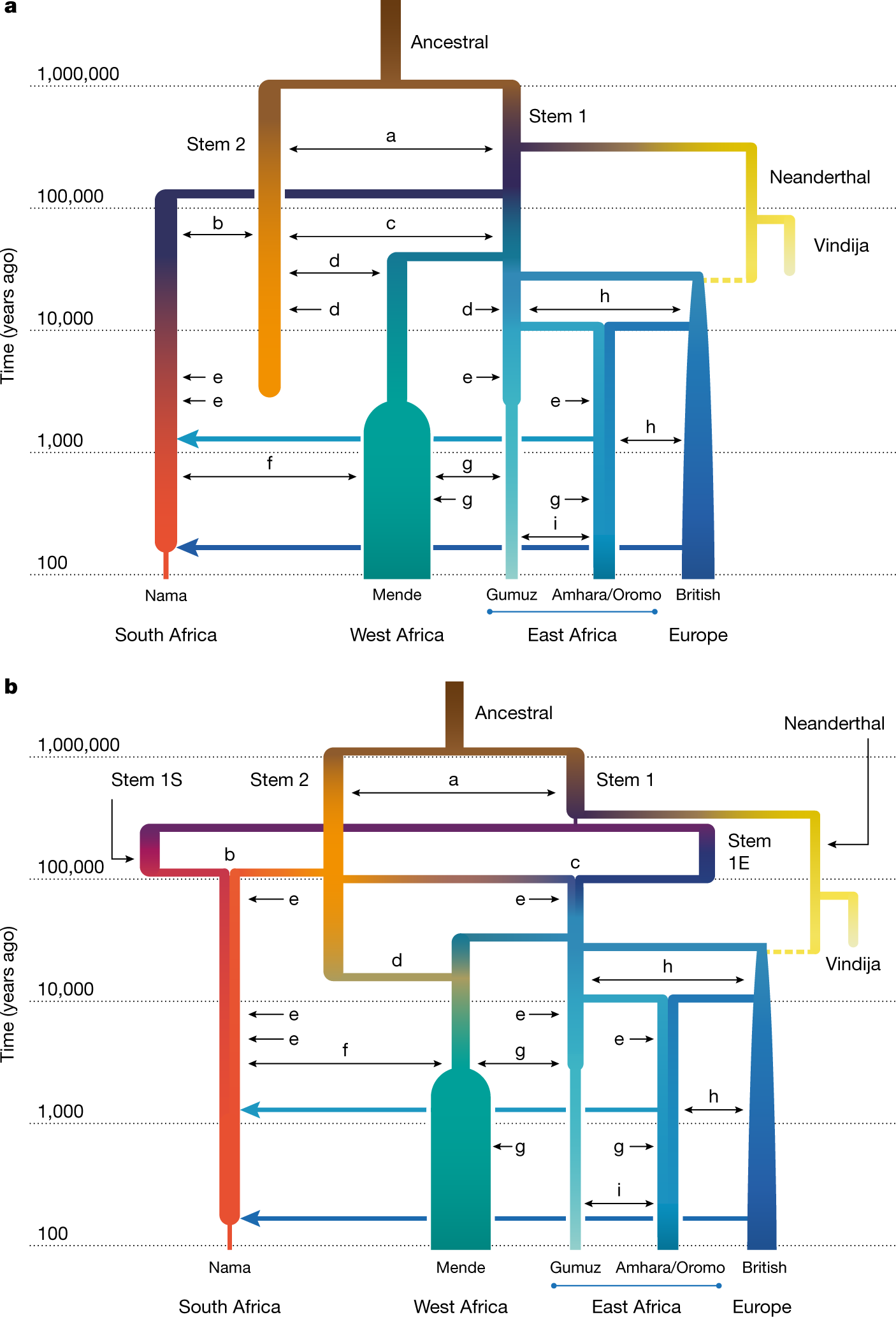Science
Related: About this forumHuman-evolution story rewritten by fresh data and more computing power
I came across this news item in my Nature Briefing News Feed:
Human-evolution story rewritten by fresh data and more computing power
Subtitle:
The models supporting this theory rely on new software and genomic-sequencing data from current African and Eurasian populations, as well as Neanderthal remains. Researchers published the results on 17 May in Nature1.
The study contributes more evidence to the idea that there is “no single birthplace in Africa, and that human evolution is a process with very deep African roots”, says Eleanor Scerri, an evolutionary archaeologist at the Max Planck Institute of Geoanthropology in Jena, Germany.
The single-origin theory has been popular for decades, partly on the basis of fossil records. But the theory doesn’t fit the data well, says Scerri. All of the tools and physical traits attributed to Homo sapiens cropped up throughout Africa around a similar time, 300,000 to 100,000 years ago. If humans had radiated from a single location, archaeologists would expect to see more recent fossils farther away from a central point, and older ones closer to it...
...This study incorporated genome-sequencing data from existing eastern and western African populations and the Nama people of southern Africa. This spread of genomic data helped the researchers to understand and track the historical movement of genes across generations.
“We really wanted to sit down and very systematically evaluate the models in a more creative way,” says Henn. “It’s a new model for human evolution that is concrete.”
The models used variables such as migration and population merging to predict gene flow over the course of thousands of years. Those predictions were then compared with the genetic variation seen today to determine which models matched the data best...
Ultimately, questions still abound about humans’ origins. Henn wants to add more DNA from other African regions to the models to see if that changes their results. She also hopes to use the data to make predictions about the fossil record, such as what features would be found in human fossils from a particular area...
The full original scientific paper is here:
A weakly structured stem for human origins in Africa
It is said to be open sourced.
For convenience a graphic from the paper, as well as it's caption:

The caption:
I recently had a chance to visit the Smithsonian Museum of Natural History in Washington DC. They have a very nice display on human evolution, lots of models of fossils, some actual fossils, videos, etc.
But of course, someone was marching through the (happily) crowded exhibit announcing loudly to her companion that she didn't believe in evolution, the increasingly common claim that facts are subject to belief but religious texts written by ancient barely literate sheepherders were inviolable.
I trust you're enjoying the weekend.
cachukis
(2,771 posts)They have found fossils in surprising places.
Been curious about language development and phonemes. There are spoken languages in southwestern Africa that have as many as 45 or 46.
Wonder if there is a correlation to human existence to sophisticated sounds?
NNadir
(34,890 posts)...mutations in the human genome in some subset of individuals, would confer a survival advantage, and thus be subject to selection pressure and quickly move through the population.
It is now widely understood that people of European extraction contain some Neanderthal genes, a few percent apparently, and the question has arisen as to whether Neanderthals used language. Maybe they did, but if they didn't this may account for the destruction of their species. I'm not familiar with any of the details in the literature, but I am aware of the debate. It's possible therefore that when Africans arrived in Europe, where they evolved white skin under selection pressure to produce vitamin D in cold climates, they also brought the genes for language use.
It's all speculation on my part - I'm hardly an expert - but it seems reasonable.
The interbreeding of distinct populations with a different genome to "homogenize" into Homo Sapiens, which, as I read it, is the point of this paper seems to have taken place once again in Europe in the case of Neanderthals and Homo Sapiens.
I find it interesting that in a connotative sense, the word "Neanderthal" can imply "stupidity" often to people experiencing White Privilege - and I am myself a person of European extraction - when the people who most benefit from this privilege, descended from a race of human beings who set out to brutally conquer the world, Europeans, are in fact, the most Neanderthal.
It is clear that when the language genes left Africa, they spread throughout the world, a clear selective advantage, particularly when dealing with new climatic zones.